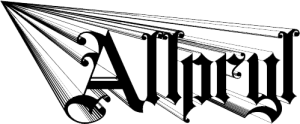Production
In our modern facility we have several production lines, all with their own unique abilities and purposes.
We develop and make all the tools ourselves, with the help of computers. Thanks to the 3D -construction we can simulate the real functions and appearance at an early stage in the manufacturing process, this makes the product development more cost-effective. The construction work is usually done in SolidWorks. After the 3D-construction is completed, we make a program code for the milling in Edgecam. See Computer Aided Design (CAD)
Milling, Computer Aided Model (CAM)
By using the code from the computer, the milling machine Mills the intended geometry. This is usually done in ureol material. The machine is a 5-axis CNC -milling machine and has a working area of 3600 x 1600 x 900 mm. See Milling, Computer Aided Model (CAM)
Once the model is finished its time to make a casting model of it. This is unless it’s a prototype, which means we use the ureol model directly in the vacuum machine (see vacuum forming further down this page). The forming is done using fine sand and hardener that makes the sand hard. The forming works as follows: The model’s exterior geometry becomes covered in sand, when the sand is solidified the model is removed and you get a form in sand which is to be used in the casting. see forming
Thanks to the foundry department, we make all of the tools for the packaging solutions ourselves. This means that tools are quick to produce, due to the short distance and short ways of communication. An important result of this is that the tools we make often becomes cheaper this way. All the tools are sand casted in aluminum. We cast not only tools for packaging solutions, but also other details of various types. see Casting
Currently we have five fully equipped and automated vacuum thermoforming machines. Our equipment allows all type of vacuum thermoforming with all types of thermoplastic materials. Thanks to our broad machine program we can always choose the most optimal solution, regardless of size and shape of the detail to be formed. The Vacuum thermoforming process works like this: The aluminium tool or ureolmodel is placed in a chamber in the vacuum thermoforming machine. A plastic sheet in a optional thickness covers the opening of the chamber. A bottom element and a top element heats up the plastic sheet after its been placed over the opening. When the temperature becomes high enough for the plastic sheet to be formed, the elements are pushed away. The chamber gets filled with air so that the plastic sheet gets a “bubble”, this prevents the plastic sheet from sinking into the machine. The tool is then pushed up to the plastic sheet. When the tool gets in the right position, the chamber must be emptied from air. The “bubble ” disappears and a vacuum pressure is created. The plastic sheet gets the form of the tool thanks to the vacuum holes, which are evenly placed over the tool. The vacuum pressure sucks the plastic sheet in place with the help of the holes. See an example of the process: Vacuum Forming
We can offer many different solutions for finishing work. The most common form is cutting. Some other finishing work methods are punching, gluing, mounting, stamping, drilling and deburring. There is also the possibility of using the 5-axis CNC -milling machine, which enables high precision with high speed. see Finishing
When the vacuum thermoforming and the finishing work is completed, the packaging is done and ready for delivery. See pictures of packaging solutions we made earlier: Packaging
In other words, we can help you all the way from concept and development to production of the finished product. comprising: Product development, 3D -construction, prototyping, production tool and final production.
